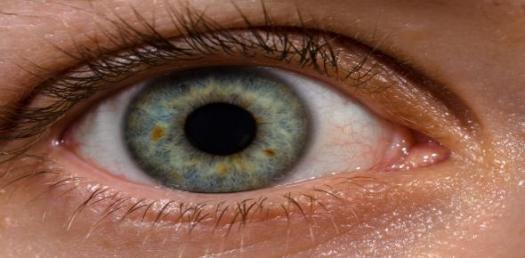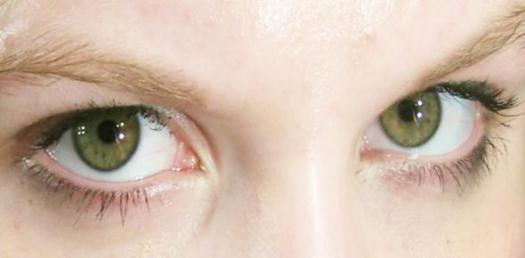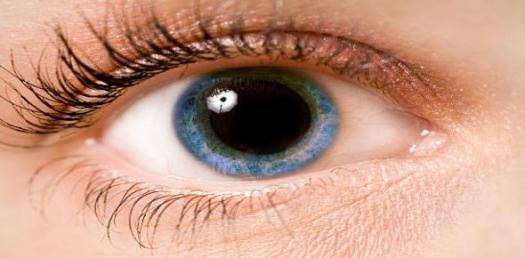Everything You Should Know About The Myopia!

Myopia is an eye disorder where light focuses in front of the retina instead of on the retina, making distant objects blurred while close objects appear normal. In this situation, the eyeball is too long relative to the focusing power of the cornea and lens of the eye. What do you know about the disorder? Take our quiz to find out.
- 1.
Which of the following is not a symptom of myopia?
- A.
Stomach ache
- B.
Distant objects become blur
- C.
Headaches
- D.
Eye strain
Correct Answer
A. Stomach acheExplanation
Myopia, also known as nearsightedness, is a condition where distant objects appear blurry while close objects can be seen clearly. The symptoms of myopia include blurred vision of distant objects, headaches, and eye strain. However, stomach ache is not a symptom of myopia. It is important to consult an eye care professional for a proper diagnosis and treatment of myopia.Rate this question:
-
- 2.
Which of the following cannot cure the disorder?
- A.
Eyeglasses
- B.
Contact lens
- C.
Surgery
- D.
Blowing air thw eye
Correct Answer
D. Blowing air thw eyeExplanation
Blowing air into the eye cannot cure the disorder because it does not address the underlying cause of the disorder. Eyeglasses, contact lenses, and surgery are all potential treatments for certain eye disorders as they aim to correct vision problems or address structural issues within the eye. However, blowing air into the eye does not have any therapeutic effect and therefore cannot cure the disorder.Rate this question:
-
- 3.
Which field is concerned with the disorder?
- A.
Gynaecology
- B.
Ophthalmology
- C.
Dentistry
- D.
Orthopedics
Correct Answer
B. OphthalmologyExplanation
Ophthalmology is the field concerned with disorders related to the eyes. It focuses on the diagnosis, treatment, and prevention of eye diseases and disorders. This field deals with conditions such as cataracts, glaucoma, macular degeneration, and other vision impairments.Rate this question:
-
- 4.
Which of the following plays a pivotal role in establishing your chances of having this problem?
- A.
Hereditary
- B.
Playfulness
- C.
Low sugar level
- D.
Close contact with light
Correct Answer
A. HereditaryExplanation
Hereditary factors play a pivotal role in establishing the chances of having this problem. This suggests that the problem in question is likely to be influenced by genetic factors passed down from one's ancestors. The other options, such as playfulness, low sugar level, and close contact with light, do not seem to be relevant or have a direct impact on the likelihood of experiencing this problem.Rate this question:
-
- 5.
What is the full meaning of PRK?
- A.
Photorefractive keratectomy
- B.
Photorestored kinetic
- C.
Photoreminal Kraig
- D.
Photorevival Karl
Correct Answer
A. Photorefractive keratectomyExplanation
PRK stands for Photorefractive keratectomy. This is a type of laser eye surgery that is used to correct vision problems such as nearsightedness, farsightedness, and astigmatism. During the procedure, the surgeon uses a laser to reshape the cornea, improving the way the eye focuses light onto the retina. This surgery is an alternative to LASIK and is commonly used when the patient has thin corneas or other factors that make them unsuitable for LASIK.Rate this question:
-
- 6.
Which of the following does LASIK not help in correcting?
- A.
Myopia
- B.
Hyperopia
- C.
Astigmatism
- D.
Relp
Correct Answer
D. RelpExplanation
LASIK is a surgical procedure that corrects refractive errors in the eye, such as myopia (nearsightedness), hyperopia (farsightedness), and astigmatism. However, "Relp" is not a recognized refractive error, so LASIK cannot help in correcting it.Rate this question:
-
- 7.
How many minutes does LASIK take to be performed?
- A.
15mins
- B.
16mins
- C.
17mins
- D.
18 mins
Correct Answer
A. 15minsExplanation
LASIK (Laser-Assisted in Situ Keratomileusis) is a surgical procedure used to correct vision problems. It involves using a laser to reshape the cornea. The correct answer is 15 minutes because LASIK typically takes a short amount of time to perform. The procedure itself usually only takes around 10-15 minutes per eye. This quick procedure time is one of the reasons why LASIK is a popular choice for vision correction.Rate this question:
-
- 8.
Which of the following does not help in managing myopia?
- A.
Eyeglasses
- B.
Orthokeratology lenses
- C.
LASIK
- D.
Sleeping
Correct Answer
D. SleepingExplanation
Sleeping does not help in managing myopia. Myopia, also known as nearsightedness, is a refractive error where distant objects appear blurry. Eyeglasses, orthokeratology lenses, and LASIK are all methods commonly used to manage myopia by correcting the refractive error in the eye. However, sleeping does not have any direct impact on the progression or management of myopia. While adequate sleep is important for overall eye health, it does not specifically address myopia.Rate this question:
-
- 9.
What stage of life does nearsightedness begin?
- A.
Adulthood
- B.
Infancy
- C.
Childhood
- D.
Old age
Correct Answer
C. ChildhoodExplanation
Nearsightedness, also known as myopia, typically begins during childhood. This condition causes difficulty in seeing objects clearly at a distance while close objects remain clear. It is caused by the elongation of the eyeball, resulting in the light focusing in front of the retina instead of directly on it. The onset of nearsightedness often occurs during school-age years and may progress throughout adolescence. Regular eye exams and corrective lenses are commonly used to manage nearsightedness in children.Rate this question:
-
- 10.
What does LASIK mean?
- A.
Laser in-Situ Keratomileusis
- B.
Laser in Stiff KKeratomileusis
- C.
Laser in Strain Keratomileusis
- D.
Laser in Stain Keratomileusis
Correct Answer
A. Laser in-Situ KeratomileusisExplanation
LASIK stands for Laser in-Situ Keratomileusis. It is a surgical procedure used to correct vision problems such as nearsightedness, farsightedness, and astigmatism. During the procedure, a laser is used to reshape the cornea, improving the way light is focused onto the retina. This can result in clearer vision without the need for glasses or contact lenses.Rate this question:
-
Quiz Review Timeline +
Our quizzes are rigorously reviewed, monitored and continuously updated by our expert board to maintain accuracy, relevance, and timeliness.
-
Current Version
-
Nov 16, 2023Quiz Edited by
ProProfs Editorial Team -
Nov 30, 2019Quiz Created by
Gregorynaomi
 Back to top
Back to top












